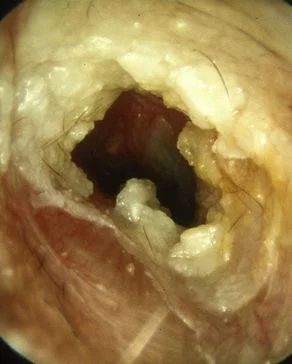Otitis Externa
(External Ear Infection)
Home | Services | Ear, Hearing Loss & Audiology | Otitis Externa – External Ear Infection
What Is Otitis Externa?
Otitis externa is also known as an external ear infection This mainly affects the outer ear and ear canal, and causes pain resulting from inflammation, irritation, or infection. These symptoms are experienced when water gets trapped in your ear allowing bacteria to spread, causing a painful sensation. Because this condition commonly affects swimmers it is also known as swimmer’s ear.
What Causes Otitis Externa?
A common source of the infection is increased moisture trapped in the ear canal as a result of bathing, or showering, increased humidity or living in warm moist climates like in Singapore. When water or moisture is trapped in the ear canal, bacteria that normally inhabit the skin and ear canal multiply, causing infection and irritation of the ear canal.
What Other Factors Cause Otitis Externa?
Other factors that may contribute to swimmer’s ear include:
- Contact with excessive bacteria that may be present in bathtubs or polluted water
- Excessive cleaning of the ear canal with cotton swabs
- Contact with certain chemicals such as hair spray or hair dye
- Damage to the skin of the ear canal following water irrigation to remove wax
- A cut in the skin of the ear canal
- Other skin conditions affecting the ear canal such as eczema
What Are Signs And Symptoms Of Otitis Externa?
The most common symptoms of otitis externa are an itchy ear and mild to moderate pain that gets worse when you tug on the outer ear. Other signs and symptoms may include any of the following:
- Sensation that the ear is blocked
- Ear discharge
- Fever
- Decreased hearing
- Intense pain that may radiate to the neck, face, or side of the head
- Swollen neck lumps or lymph nodes
- Redness and swelling of the skin around the ear

Bacterial otitis externa with debris in the ear canal

Fungal otitis external with fungal spores and hyphae
What Are Some Complications Of Otitis Externa?
Some complications include:- Recurring ear infections
- Bone and cartilage damage (malignant otitis externa)
- Hearing loss which may be permanent
- Perforation (hole) in the eardrum
How Is Otitis Externa Treated?
Treatment for the early stages of otitis externa includes careful cleaning of the ear canal and eardrops that inhibit bacterial growth. In the case of fungal otitis externa, anti-fungal ear drops may also be used. Topical steroids may also be used in combination with anti-bacterial and anti-fungal ear drops to speed up recovery and reduce swelling. If the ear canal is swollen shut, a sponge or wick may be placed in the ear canal so that the ear drops will be more effective. Oral antibiotics may also be prescribed if the infection goes beyond the skin of the ear canal, or for severe otitis externa. Pain medication may also be prescribed.How Should I Apply My Ear Drops?
Drops are more easily administered if done by someone other than the patient. The patient should lie down with the affected ear facing upwards and the eardrops should be placed in the ear. After drops are administered, the patient should remain lying down on the unaffected side for 5 minutes so that the drops can be absorbed.Ear Conditions
- Otitis Externa (External Ear Infection)
- Otitis Media (Middle Ear Infection / Glue Ear)
- Eustachian tube dysfunction
- Perforated eardrum (hole in eardrum)
- Ear Wax
- Ear Trauma
- Tinnitus








